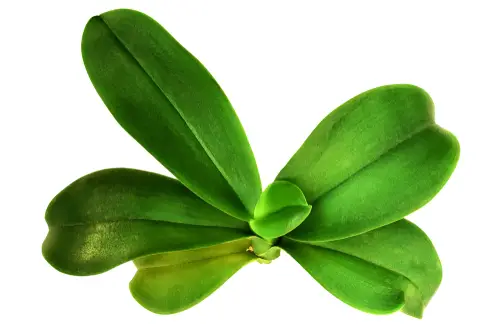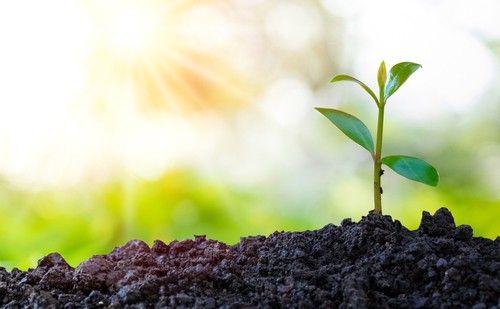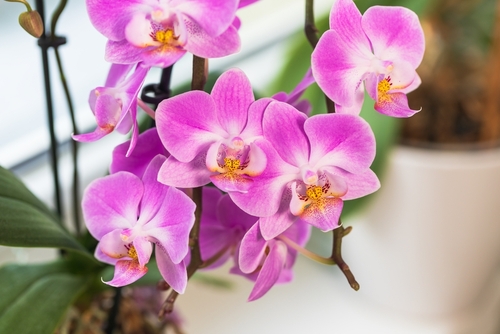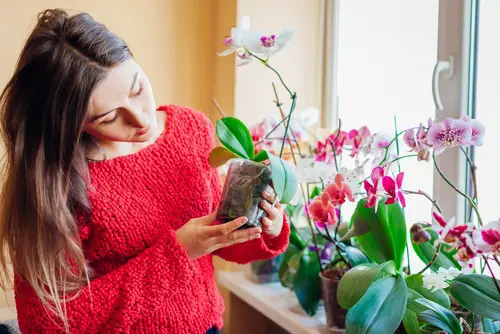Orchids are a popular houseplant that can brighten up any space with their vibrant colors and unique shapes. However, if you notice that the stem of your orchid is turning yellow, it can be a cause for concern. Yellowing stems can be a sign of a problem with your orchid’s health, and it is important to understand the common causes of this issue.
Understanding orchids is an essential first step in determining why your orchid stem is turning yellow. Orchids are a type of flowering plant that require specific care and conditions to thrive.
There are many different types of orchids, each with their own unique needs, but most orchids require bright, indirect light, proper watering and humidity levels, and regular fertilization. Signs of a yellowing orchid stem can vary depending on the type of orchid, but generally, yellowing stems can be a sign of a problem with the plant’s health.
Common causes of yellowing orchid stems include overwatering, exposure to direct sunlight, and natural aging. Overwatering can lead to root rot, which can cause the stem to turn yellow and eventually die. Exposure to direct sunlight can also cause the stem to turn yellow, as can natural aging.
Orchids are known for their beautiful blooms, but once the blooms have died, the stem may turn yellow and eventually fall off. Understanding the common causes of yellowing orchid stems can help you identify the problem and take steps to correct it.
Key Takeaways on Orchid Stems Turning Yellow
- Orchids are a type of flowering plant that require specific care and conditions to thrive.
- Common causes of yellowing orchid stems include overwatering, exposure to direct sunlight, and natural aging.
- Understanding the common causes of yellowing orchid stems can help you identify the problem and take steps to correct it.
You might also like:
- Why Are My Okra Leaves Turning Yellow?
- Why Are My Morning Glory Leaves Turning Yellow?
- Why Are My Lavender Leaves Turning Yellow?
Understanding Orchids

Orchids are one of the most diverse and fascinating groups of flowering plants, with over 25,000 species and 100,000 hybrids. They are found in almost every habitat on Earth, from tropical forests to deserts, and they grow as epiphytes, lithophytes, and terrestrial plants.
Epiphytic orchids, like Phalaenopsis, Dendrobium, and Paphiopedilum, grow on trees or rocks, using their roots to anchor themselves in place and absorb water and nutrients from the air and rainwater. They are often found in tropical forests, where they thrive in the warm, humid climate and bright, filtered light.
Orchids have unique adaptations that allow them to survive in these challenging environments. For example, their flowers are often brightly colored and fragrant to attract pollinators, such as bees, butterflies, and moths.
They also have specialized root systems that can absorb water and nutrients from the air and rainwater, and their leaves are designed to minimize water loss.
Despite their beauty and adaptability, orchids can be challenging to grow and maintain. They have specific requirements for light, water, and temperature, and they are susceptible to a variety of pests and diseases.
In the next section, we will explore some of the reasons why orchid stems turn yellow, and what you can do to prevent and treat this common problem.
Signs of a Yellowing Orchid Stem
Yellowing of orchid stems is a common issue that many orchid growers face. It is a sign that something is wrong with the plant, and it is essential to identify the cause to take appropriate action. Here are some signs of a yellowing orchid stem:
- Yellowing of Leaves: One of the first signs of a yellowing orchid stem is the yellowing of leaves. The leaves may turn yellow or brown and become dry and brittle. This is often a sign of overwatering or underwatering.
- Yellowing of Flower Spike: If only the part of the stem holding the bloom has turned yellow, it is a sign that the flower spike is dying out. Cut down the yellow flower spike to let it dry and fall off.
- Yellow Stems: Yellowing of orchid stems can also occur due to overexposure to direct light, normal aging, bacterial and fungal infections, or pests. If the stem has turned yellow, it is often a sign of a more severe issue.
- Color Change: The stem may also turn brown or black, depending on the cause of the yellowing. It is essential to identify the cause of the yellowing to take appropriate action.
Orchid Stems Turning Yellow – 5 Common Problems
Yellowing orchid stems can be a sign of various issues plaguing the plant. Here are some of the most common causes of orchid stem discoloration:
1. Overexposure to Direct Light

Orchids thrive in bright, indirect light. However, too much direct sunlight can scorch their leaves and stems, causing them to turn yellow. If you notice that your orchid is getting too much light, try moving it to a shadier spot or filtering the light with a sheer curtain.
2. Overwatering
Overwatering is a common cause of orchid stem yellowing. When orchids are overwatered, their roots can become waterlogged, leading to root rot and poor nutrient absorption. This can cause the leaves and stems to turn yellow and eventually die.
To prevent overwatering, make sure your orchid is planted in a well-draining potting mix and only water it when the top inch of soil feels dry to the touch.
3. Fungal and Bacterial Infections
Fungal and bacterial infections can also cause orchid stem yellowing. These infections can be brought on by overwatering, poor air circulation, or high humidity.
Symptoms of infection include yellowing leaves and stems, as well as black spots or lesions on the plant. To prevent infection, make sure your orchid is planted in a well-draining potting mix and avoid getting water on the leaves and stem.
4. Pest Infestation
Pests such as mealybugs can also cause orchid stem yellowing. These insects feed on the sap of the plant, causing it to weaken and turn yellow. To prevent pest infestations, regularly inspect your orchid for signs of insects and treat any infestations promptly.
5. Nutrient Deficiency
Orchids require specific nutrients, such as nitrogen, to thrive. A lack of these nutrients can cause the leaves and stems to turn yellow. To prevent nutrient deficiencies, make sure your orchid is planted in a nutrient-rich potting mix and fertilize it regularly with a balanced orchid fertilizer.
Effects of Light on Orchid Health
Light plays a crucial role in the health of orchids. Orchids are tropical plants that require the right amount of light to thrive. Too much or too little light can cause yellowing of the leaves and stems, which can eventually lead to the death of the plant.
Direct light can be harmful to orchids, especially during the hottest part of the day. It can cause the leaves to burn and turn yellow. Indirect light is best for orchids, as it provides the right amount of light without burning the leaves or stems.
Sunlight is essential for orchids, but too much direct sunlight can cause the leaves and stems to turn yellow. It is important to provide your orchids with the right amount of sunlight, depending on the species of orchid.
Grow lights can be used to supplement natural light, but they should be used carefully. Excess light can cause yellowing of the leaves and stems, so it is important to monitor the amount of light your orchids receive.
Sheer curtains can be used to filter the light and protect the orchids from direct sunlight. This can be especially helpful during the hottest part of the day when the sun is at its strongest.
Watering and Moisture Control

One of the most common reasons for orchid stems turning yellow is improper watering and moisture control. Overwatering or underwatering can cause stress to the roots, which can lead to yellowing stems.
It is important to ensure that the roots are well-hydrated but not waterlogged. Overwatering can cause the roots to rot, which can lead to the spread of fungal infections to the stems and leaves. On the other hand, underwatering can cause the roots to dry out and become too brittle, leading to moisture stress and yellowing stems.
To ensure proper moisture control, it is recommended to water orchids once a week or when the potting mix feels dry to the touch. It is also important to use clean water to avoid any buildup of minerals or chemicals that can harm the roots.
Some orchid growers also recommend using a diluted solution of hydrogen peroxide to flush the soil and prevent any bacterial or fungal growth.
In addition to proper watering, it is also important to ensure that the roots are healthy. Healthy roots are white or green and firm to the touch, while unhealthy roots are brown or black and soft or mushy. Aerial roots are also common in orchids and should not be cut off unless they are unhealthy.
Nutrition and Fertilizer Use
Proper nutrition is essential for healthy orchids. A nutrient deficiency can cause orchid stems to turn yellow. Orchids require a balanced fertilizer that contains nitrogen, phosphorus, and potassium.
Nitrogen is essential for leaf growth, while phosphorus is necessary for flower development. Potassium helps to build strong stems and roots.
It is important to avoid over-fertilizing orchids, as this can cause root burn and damage to the plant. Orchids should be fed with a balanced fertilizer once a month during the growing season, which typically runs from spring to fall. During the dormant season, which is usually in winter, feeding should be reduced or stopped altogether.
When selecting a fertilizer for orchids, it is important to choose one that is specifically formulated for these plants. Orchid fertilizers typically have a higher concentration of nitrogen than other fertilizers. They may also contain other micronutrients that are essential for orchid health.
In addition to fertilizing, it is important to ensure that orchids are receiving the proper amount of water and light. Overwatering or underwatering can cause nutrient deficiencies and yellowing of the stems.
Orchids should be watered when the potting mix is dry to the touch, and they should be placed in a location that receives bright, indirect light.
How Temperature and Humidity Impact Orchids

Orchids are sensitive to temperature and humidity changes. They thrive in warm, humid environments, which mimic their natural habitat. If the temperature or humidity levels are not ideal, orchids can show signs of stress, such as yellowing stems.
Temperature
Orchids prefer temperatures between 60°F to 80°F (15°C to 27°C). Temperature changes can cause stress to the plant, which can lead to yellowing stems. If the temperature drops below 60°F (15°C), the orchid may develop cold damage, which can cause the stem to turn yellow and die.
On the other hand, if the temperature rises above 80°F (27°C), the orchid may suffer from heat stress. High temperatures can cause the stem to turn yellow and wilt. It’s important to keep the orchid in a location with consistent temperatures and avoid exposing it to extreme temperature changes.
Humidity
Orchids require high humidity levels to thrive. Ideally, the humidity levels should be between 50% to 70%. If the air is too dry, the orchid may show signs of stress, such as yellowing stems and wilting flowers.
To increase humidity levels, a humidifier can be used. Alternatively, a humidity tray can be placed under the orchid’s pot. The tray is filled with water, and the pot sits on top of it. As the water evaporates, it creates a humid microclimate around the orchid.
It’s important to avoid placing the orchid in a location with low humidity levels, such as near air conditioning vents or drafty windows. This can cause the stem to turn yellow and die.
Orchid Diseases and Pests
Orchids are susceptible to various diseases and pests that can cause their stems to turn yellow. Here are some of the most common diseases and pests that orchid owners should be aware of:
Fungal and Bacterial Infections
Fungal and bacterial infections can cause yellowing of the leaves, stem, and roots of orchids. Crown rot and root rot are two common fungal infections that can cause the orchid stem to turn yellow and eventually die. Leaf spot is another fungal infection that can cause yellow spots on the leaves and stem.
To prevent fungal and bacterial infections, it is important to keep the orchid’s environment clean and dry. Avoid overwatering and provide proper ventilation. If the orchid is infected, it may be necessary to use a fungicide or bactericide to treat the infection.
Pests

Pests such as mealybugs and spider mites can also cause yellowing of the orchid stem. Mealybugs can cause a sticky residue on the plant and lead to a pest infestation. Spider mites can cause yellow spots on the leaves and stem and eventually lead to the death of the plant.
To prevent pest infestations, it is important to inspect the orchid regularly and remove any pests immediately. Insecticidal soap or neem oil can be used to treat the infestation.
Orchid Care and Maintenance
Orchids are beautiful and delicate plants that require proper care and maintenance to thrive. Proper care and maintenance of orchids include repotting, pruning, and providing the right potting media, light, and water.
When repotting orchids, it is important to choose the right potting media. Orchids require a well-draining mix that allows for proper air circulation around the roots. The potting media should also provide adequate nutrients for the plant’s growth.
Pruning is another important aspect of orchid care and maintenance. Pruning helps to remove dead, damaged, or diseased parts of the plant. This encourages healthy growth and prevents the spread of disease.
Orchids require indirect sunlight to thrive. Direct sunlight can cause damage to the plant’s foliage and flowers. It is recommended to place orchids in a location that receives bright, indirect sunlight.
Proper watering is essential for the health of orchids. Overwatering can cause root rot and other issues. Underwatering can cause the plant to become dehydrated and lead to yellowing of the leaves and stems.
Orchids require adequate photosynthesis and transpiration to thrive. It is important to mist the plant regularly to increase humidity levels around the plant. This helps to prevent the plant from becoming dehydrated.
Pseudobulbs are an important part of the orchid plant. They store water and nutrients for the plant’s growth. Healthy pseudobulbs are plump and firm to the touch.
Orchids are known for their colorful blooms and aesthetic appeal. To encourage blooming, it is important to provide the plant with the right amount of light and water. It is also important to ensure that the plant is healthy and free from disease.
Conclusion
Yellow orchid stems can be caused by a variety of factors, including overwatering, overexposure to light, bacterial or fungal infections, and the natural aging process. Orchids that are experiencing stunted growth, dying back, or wilting may also have yellow stems as a symptom.
It is important to note that not all yellowing stems are a cause for concern. For instance, if the orchid is sympodial, such as a Paphiopedilum or Phragmipedium orchid, it is normal for the old stem to be yellow as it dies back after blooming.
To prevent yellowing stems, orchids should be watered sparingly and allowed to dry out between watering sessions. It is also important to ensure that the orchid is not overexposed to direct sunlight, which can cause the stems to turn yellow and develop dark spots.
In addition, orchids are sensitive to the minerals found in tap water, such as calcium and fluoride. These minerals can build up in the soil and cause the orchid’s sap to become thick and white, leading to yellowing stems. Using filtered water or rainwater can help prevent this issue.
Frequently Asked Questions

Should I cut off a yellow orchid stem?
Cutting off a yellow orchid stem depends on the severity of the yellowing and the cause. If the yellowing is due to a fungal or bacterial infection, it is best to cut off the affected stem to prevent the spread of the disease.
However, if the yellowing is due to overwatering or excessive sunlight, it is best to address the underlying issue before considering cutting off the stem.
Why is one of my orchid stems turning brown but the leaves are still green?
A brown orchid stem with green leaves may indicate that the stem is dying. This could be due to a lack of nutrients, overwatering, or exposure to direct sunlight. It is important to identify the underlying cause and address it as soon as possible to prevent further damage.
Why is my orchid stem turning brown?
An orchid stem turning brown could be due to several reasons, including overwatering, lack of nutrients, or fungal and bacterial infections. It is important to identify the underlying cause and address it as soon as possible to prevent further damage.
Why is my orchid stem turning orange?
An orchid stem turning orange could be due to exposure to direct sunlight or lack of nutrients. It is important to move the orchid to a shaded area and ensure that it is receiving the necessary nutrients to prevent further discoloration.
What do I do if my orchid stem is yellow?
If your orchid stem is yellow, it is important to identify the underlying cause. Overwatering, excessive sunlight, and nutrient deficiencies are common causes of yellowing orchid stems. Addressing the underlying issue can help prevent further damage and promote healthy growth.
How do you save a yellow orchid?
Saving a yellow orchid depends on the cause of the yellowing. If the yellowing is due to overwatering, it is important to reduce watering frequency and ensure proper drainage.
If the yellowing is due to lack of nutrients, it is important to fertilize the orchid with a balanced fertilizer. If the yellowing is due to excessive sunlight, it is important to move the orchid to a shaded area.

Hey, I’m Lisa and I’ve been an avid gardener for over 30 years. I love writing, talking and living in the garden! Feel free to connect with me on my socials below


